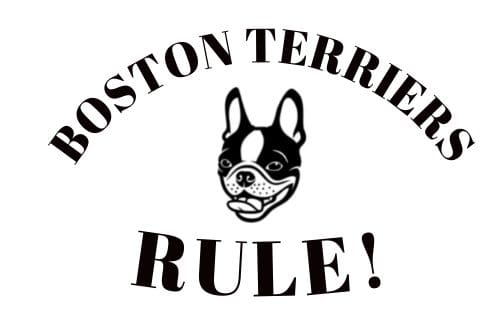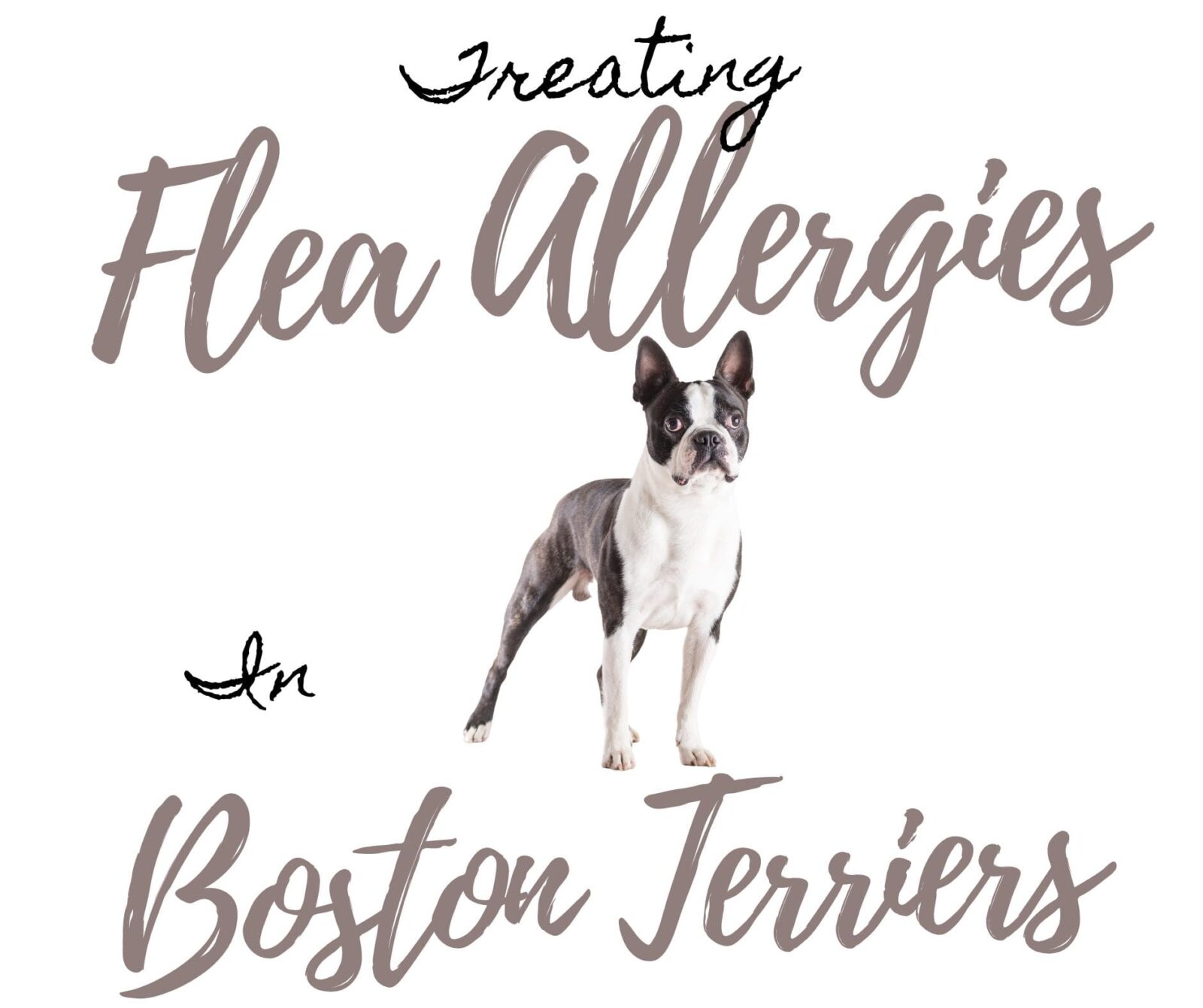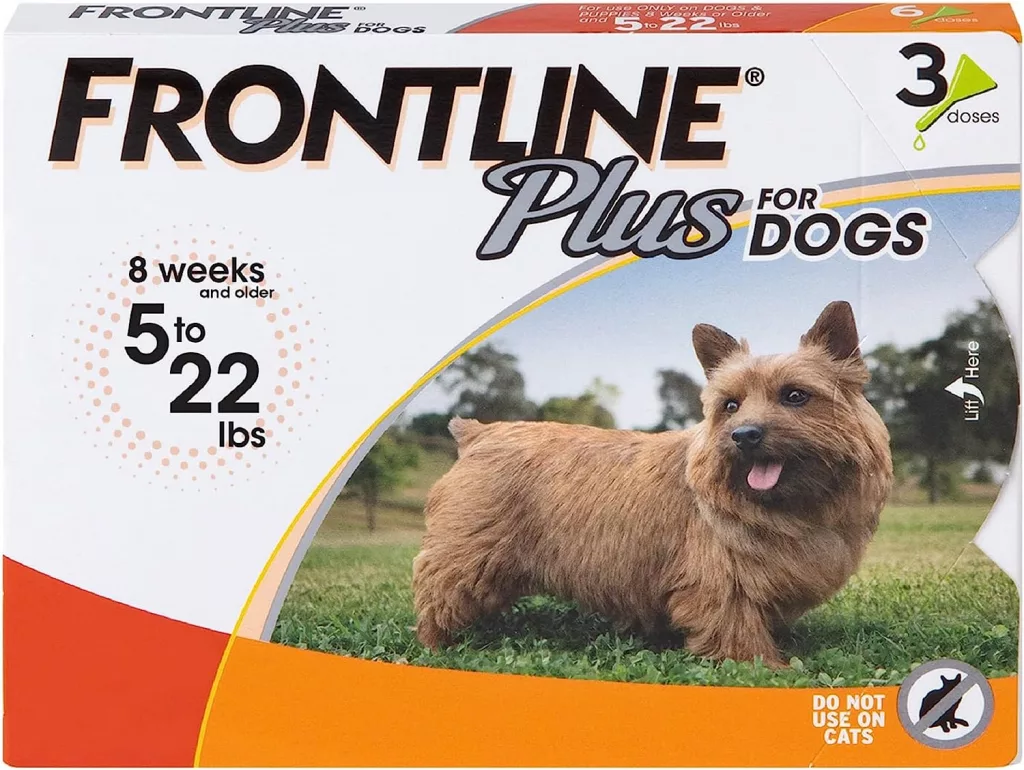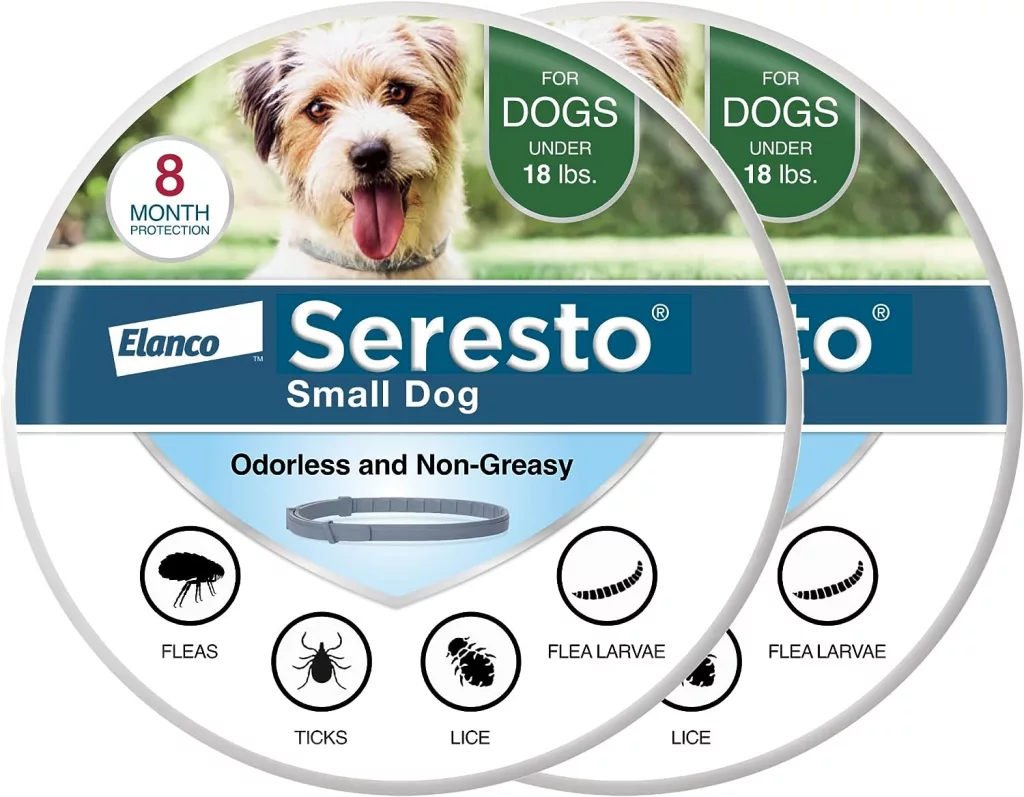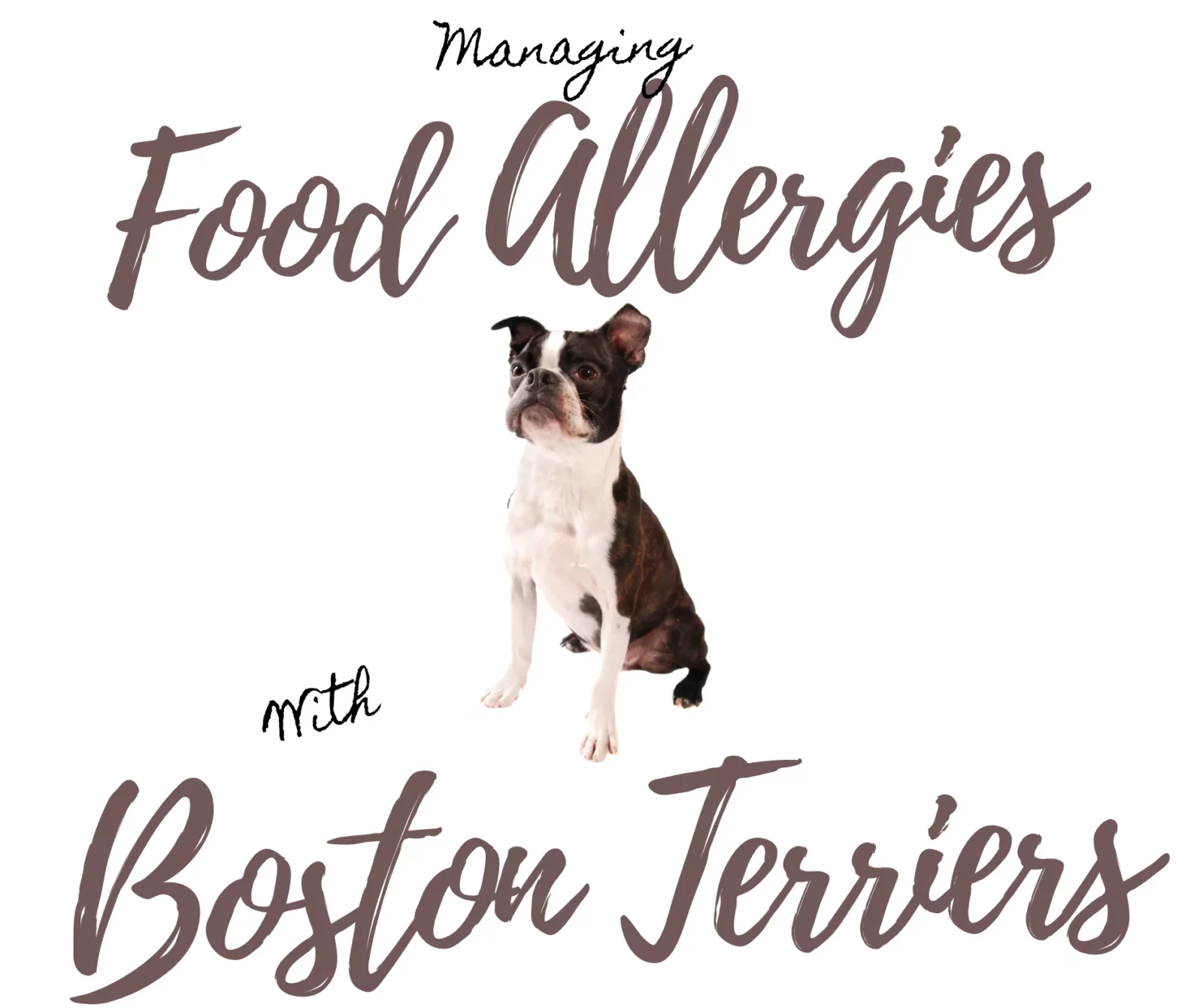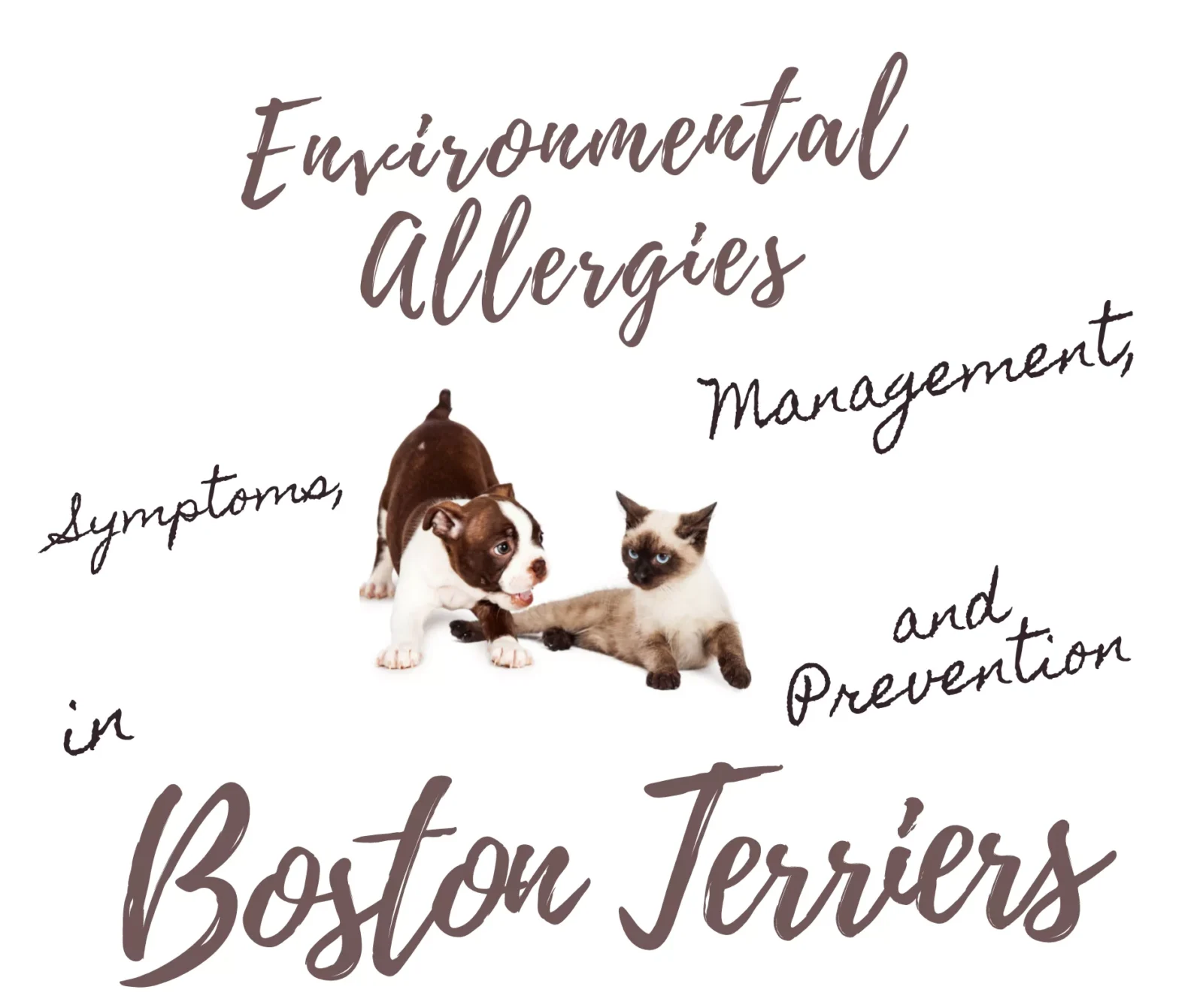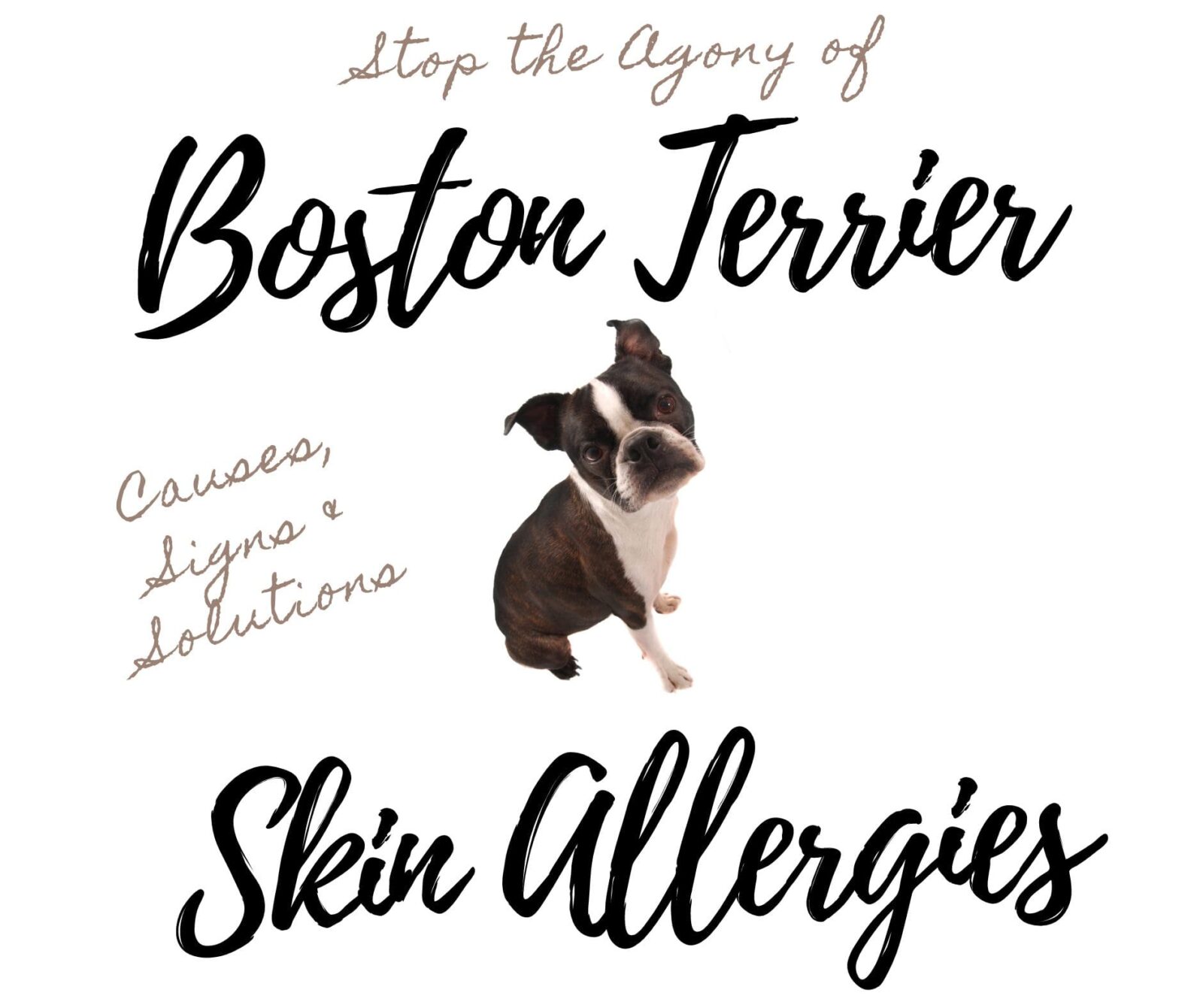Introduction
Flea Allergy Dermatitis (FAD) is a common skin condition among dogs, including Boston Terriers, caused by an allergic reaction to flea bites. These small, playful dogs are not exempt from this irritating ailment, making it crucial for pet owners to be well-informed about its prevention and treatment. In this article, I will discuss how prone Boston Terriers are to FAD, the causes and symptoms, and effective treatment options to provide relief to our loving pups. If you are interested in reading about other skin issues / allergies with Boston Terriers, click here.

Are Boston Terriers Prone to Flea Allergy Dermatitis?
Boston Terriers, are not immune to flea infestations and the subsequent flea allergies that often follow. Due to their short coat and compact size, these adorable dogs can easily attract fleas and suffer from the discomfort of Flea Allergy Dermatitis.
Additionally, their sensitive skin can exacerbate the flea allergies, making it essential for pet owners to be proactive in preventing and treating this condition.

How Flea Allergy Dermatitis Happens
Flea Allergy Dermatitis is a skin condition caused by an allergic reaction to proteins found in flea saliva. When fleas bite the dog to feed on their blood, they inject saliva into the skin.
For dogs with flea allergies, this saliva triggers an immune response, resulting in itching, redness, and discomfort. The bites can cause intense itching, leading to excessive scratching, biting, and licking, which can further exacerbate the skin irritation.

Signs and Symptoms of Flea Allergies
Identifying Flea Allergy Dermatitis in your Boston Terrier is crucial for early intervention and treatment. Common signs and symptoms of FAD include:
1.Intense itching and scratching:
Dogs with flea allergy dermatitis will often scratch themselves excessively, especially in areas where fleas commonly bite, such as the base of the tail, abdomen, and thighs.
Flea Allergy Dermatitis (FAD) is a condition in dogs that manifests through intense itching and scratching. This allergic reaction occurs when a dog is hypersensitive to flea saliva, making even a single flea bite a significant irritant. The symptoms of FAD are distressing for the dog and can greatly impact its quality of life.
The primary symptom of Flea Allergy Dermatitis is the relentless itching, which drives the dog to scratch itself excessively. The itchiness is often localized to areas where fleas tend to bite, such as the base of the tail, abdomen, thighs, and sometimes around the neck and ears. The base of the tail is a particularly common area for flea bites and subsequent itching in affected dogs.
As the dog scratches and chews at these areas in an attempt to alleviate the itch, the skin may become red, inflamed, and irritated. Persistent scratching from Flea Allergy Dermatitis can lead to hair loss, open sores, scabs, and even secondary bacterial infections. Over time, the constant trauma to the skin can cause discomfort and pain, impacting the dog’s behavior and overall well-being.
In severe cases of Flea Allergy Dermatitis, dogs may exhibit behavioral changes, such as restlessness, irritability, and difficulty sleeping due to the intense itchiness. They may struggle to focus or engage in their usual activities, affecting their appetite and energy levels.
Managing FAD involves not only treating the dog for fleas, but also addressing the allergic reaction. Flea control measures, such as regular flea prevention, treating the environment, and maintaining good hygiene, are crucial to prevent further flea infestations. Additionally, antipruritic medications, soothing shampoos, and anti-inflammatory treatments may be prescribed to alleviate itching and discomfort.
A comprehensive approach to managing Flea Allergy Dermatitis is essential for improving the dog’s comfort and preventing recurrent episodes. Regular check-ups with a veterinarian, along with a customized treatment plan, can help manage this condition and enhance the dog’s overall quality of life.
2. Red and inflamed skin:
Flea bites can cause redness, swelling, and inflammation of the skin, making it uncomfortable for the dog. Flea bites on dogs can be particularly bothersome, causing the skin to become not only red and inflamed, but also itchy and irritated. The incessant itching and discomfort can lead to scratching and even potential skin infections if the area is broken open by the dog’s scratching.
This cycle of irritation, scratching, and potential infection can further exacerbate the inflammation, making it a distressing experience for the dog. In severe cases, the constant irritation may also disrupt the dog’s sleep and overall well-being, emphasizing the importance of prompt flea control and treatment to alleviate their discomfort and prevent future infestations.
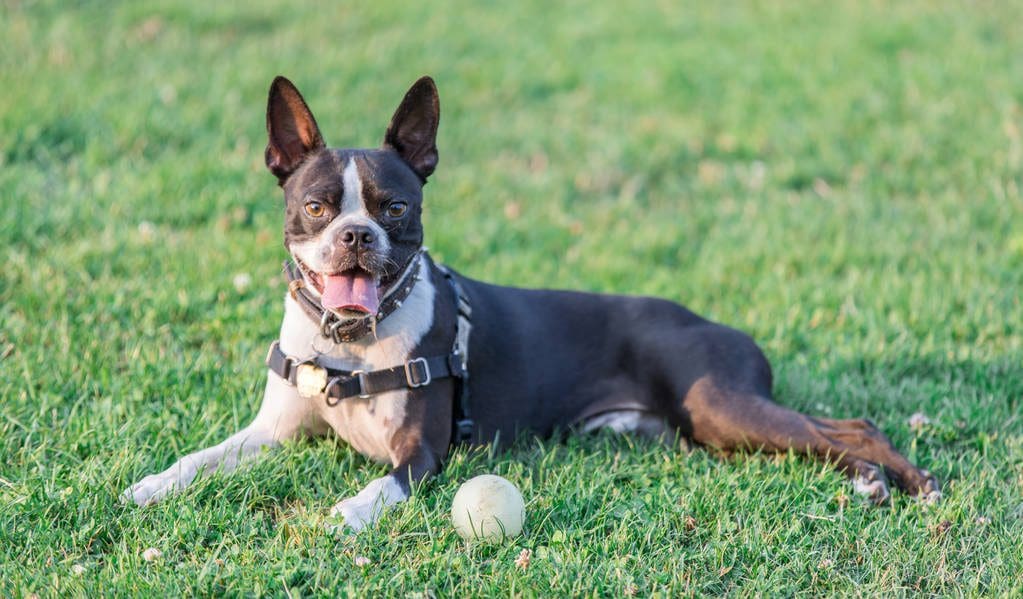
3. Hair loss and sores:
The constant scratching and biting can result in hair loss and the formation of painful sores or hot spots on the skin. Hair loss and the development of painful sores or hot spots on the skin from Flea Allergy Dermatitis are often direct consequences of persistent scratching and biting in both humans and animals.
The incessant scratching can traumatize the hair follicles, leading to hair thinning or even complete loss in affected areas. As the skin becomes more irritated and inflamed from the continuous irritation, it becomes vulnerable to the formation of sores, known as hot spots.
These sores can be painful and uncomfortable, exacerbating the distress already caused by the underlying condition. The cycle of itching, scratching, hair loss, and sore formation creates a challenging and uncomfortable experience for individuals and their furry companions, emphasizing the importance of addressing the root cause of the itching to break this harmful cycle and alleviate their discomfort.
4. Restlessness and irritability:
Dogs with FAD may display increased restlessness, irritability, or changes in behavior due to the discomfort caused by the allergic reaction. Restlessness and irritability in dogs with Flea Allergy Dermatitis (FAD) are common behavioral manifestations resulting from the discomfort caused by allergic reactions to flea bites.
The relentless itching and skin irritation triggered by the flea’s saliva can create a profound sense of unease and restlessness in affected dogs. This heightened level of discomfort may lead to changes in their typical behavior patterns, such as increased pacing, restlessness, and even aggression, as they try to alleviate their discomfort.
Their incessant scratching and attempts to soothe the itchiness can further exacerbate their irritability, causing a noticeable shift in their demeanor and interactions with their environment and human companions. It’s crucial for pet owners to recognize these behavioral changes as potential signs of flea infestation and seek appropriate veterinary care to alleviate their pet’s suffering and manage the underlying flea allergy.

5. Skin infections:
The open sores and broken skin resulting from scratching can lead to secondary bacterial infections, which may require additional medical attention.
Skin infections are a significant concern that often arise as a consequence of persistent scratching and damaging the skin. When an individual experiences intense itching, as is common with skin conditions like eczema or dermatitis, the natural response is to scratch the affected area. However, the constant scratching can cause open sores and breaks in the skin’s protective barrier. These open wounds provide an entry point for bacteria and other microorganisms to invade the body, potentially leading to secondary bacterial infections.
Once the skin’s integrity is compromised, the risk of infection escalates significantly. Bacteria that are typically present on the skin’s surface can penetrate deeper layers through the broken skin, triggering infections. These infections can manifest as redness, swelling, pain, and discharge at the site of the wound.
In some cases, the infection can spread to neighboring skin areas or even enter the bloodstream, causing systemic complications. Consequently, secondary bacterial infections resulting from skin damage often necessitate medical intervention, including the administration of antibiotics or other appropriate treatments to control the infection and prevent further complications.
Prompt and appropriate medical attention is crucial in managing these secondary infections effectively. Healthcare professionals will typically assess the severity of the infection and prescribe appropriate medications to eradicate the bacteria, alleviate symptoms, and facilitate the healing of the affected skin.
Additionally, healthcare providers may offer guidance on wound care and strategies to minimize further skin damage, emphasizing the importance of avoiding excessive scratching to prevent future infections and maintain skin health.

Treatment and Relief
Treating Flea Allergy Dermatitis in Boston Terriers involves a multi-faceted approach, including flea control, relief from symptoms, and managing skin infections. Here are some effective treatment options:
1. Flea Control
To manage Flea Allergy Dermatitis effectively, it’s crucial to eliminate fleas from your dog and its environment. Use a combination of the following methods:
Topical flea treatments: Apply vet-recommended topical flea treatments to your Boston Terrier. These products kill fleas and prevent infestations.
Oral flea medication: Administer oral flea control medications as prescribed by your veterinarian, ensuring the treatment covers both adult fleas and their larvae.
Flea collars: Use flea collars that provide extended protection against fleas and ticks.
Regular grooming: Maintain a regular grooming routine for your Boston Terrier, including frequent baths with a gentle, flea-fighting shampoo.
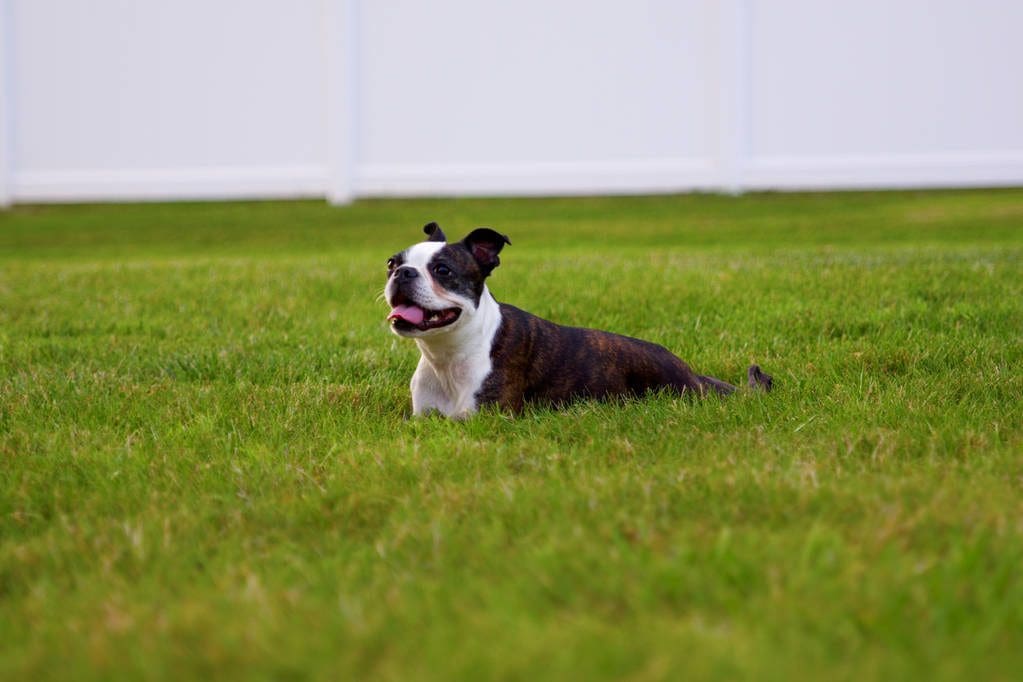
2. Symptom Relief
To alleviate the discomfort and itching associated with FAD, consider the following:
Antihistamines: Consult your veterinarian for appropriate antihistamines to help reduce itching and inflammation.
Topical treatments: Use soothing topical treatments, such as hydrocortisone creams or sprays, to alleviate itching and irritation.
Cool baths: Provide your dog with cool baths to soothe the skin and reduce itchiness.

3. Preventive Measures for Flea Control
Regular Cleaning and Maintenance:
Regular cleaning and maintenance of your home are essential in preventing flea infestations. Vacuuming your house frequently helps to remove fleas, their eggs, and larvae from carpets, upholstery, and other surfaces. Pay close attention to areas where your pets spend a lot of time.
Washing Pet Bedding:
Wash your pet’s bedding, blankets, and any fabric they frequently use in hot water. High temperatures kill fleas and their eggs, reducing the likelihood of a flea population thriving in your pet’s sleeping area.
Use of Flea Sprays or Foggers:
Employing flea sprays or foggers specifically designed for indoor use can be highly effective in eliminating fleas from your home. Follow the instructions on the product carefully, ensuring you cover all areas where fleas may be hiding, such as carpets, rugs, furniture, and pet bedding.
Regular Pet Grooming:
Regular grooming of your pets is crucial in maintaining their overall health and hygiene while also helping to prevent flea infestations. Use flea combs to remove any existing fleas and to monitor your pet’s condition. Additionally, consult your veterinarian for appropriate flea prevention products like topical treatments, collars, or oral medications.
Outdoor Maintenance:
Pay attention to your outdoor spaces as well, as fleas can thrive in yards and gardens. Keep your lawn mowed and bushes trimmed to reduce hiding spots for fleas. Consider using pet-safe insecticides or natural repellents in your outdoor areas to deter fleas.
Regular Vet Check-ups:
Schedule regular check-ups with your veterinarian to ensure your pet is healthy and free of fleas. Your vet can provide recommendations for flea prevention and treatment options suitable for your pet’s specific needs.
Isolate Infested Pets:
If you discover that one of your pets has fleas, isolate them from other pets to prevent the infestation from spreading. Treat the infested pet promptly and thoroughly to eliminate the fleas and prevent reinfestation.
Educate Yourself:
Stay informed about flea lifecycle, habits, and prevention methods. Understanding how fleas thrive and reproduce can help you implement effective preventive measures.
Regular Pest Control Services:
Consider engaging professional pest control services to regularly treat your home and yard for fleas. Professionals have access to specialized products and techniques that can effectively manage and prevent flea infestations.
Community Involvement:
Encourage your community to be proactive in flea control. Share information and best practices with neighbors and fellow pet owners to create a flea-free environment for everyone.
By implementing these preventive measures consistently, you can significantly reduce the risk of flea infestations in your home and maintain a healthy environment for both your family and your pets.
Yard maintenance: Keep your yard clean and free from debris to minimize the risk of flea infestations.
Maintaining a clean and well-kept yard is essential for not only the aesthetics of your outdoor space but also for the health and comfort of your family and pets. One significant aspect of yard maintenance is keeping it free from debris and well-groomed to minimize the risk of flea infestations. Here’s an expanded explanation of this important tip:
Regular Cleaning and Clearing:
Regularly clean your yard to remove any fallen leaves, grass clippings, branches, or other debris that can accumulate. Fleas thrive in damp and cluttered environments, so eliminating their potential hiding spots is crucial.
Mow the Lawn Regularly:
Keeping your grass trimmed and well-maintained not only improves the look of your yard but also discourages flea habitats. Fleas prefer longer grass, so regular mowing reduces their hiding places and exposure to sunlight, which can deter their growth.
Proper Waste Disposal:
Dispose of yard waste properly by bagging it or using designated compost bins. Avoid creating piles of organic matter, as these can attract fleas and other pests.
Address Standing Water Issues:
Fleas breed in moist environments. Ensure proper drainage in your yard to prevent the accumulation of standing water, which can become a breeding ground for fleas.
Regular Pest Control Treatments:
Consider using pet-friendly insecticides or flea control products specifically designed for outdoor use. Apply these treatments as directed to your yard to deter fleas and other pests.
Fencing and Barriers:
Install appropriate fencing to keep wild animals, such as rodents, raccoons, and stray animals, out of your yard. These animals can carry fleas and introduce them to your property.
Consult a Professional:
If you’re dealing with a persistent flea problem despite your efforts, consider consulting a pest control professional who can provide effective solutions and guidance tailored to your yard’s specific needs.
By following these yard maintenance practices, you can create an environment that is less conducive to flea infestations, promoting a healthier and more enjoyable outdoor space for you, your family, and your pets.
Consult a veterinarian: Regular check-ups with a veterinarian will help monitor your Boston Terrier’s overall health and address any concerns promptly.
Flea allergies in Boston Terriers, like in many other dog breeds, can be a significant concern. Flea saliva contains proteins that can trigger allergic reactions in sensitive dogs, leading to intense itching, skin irritation, redness, and even secondary skin infections. To effectively manage and mitigate flea allergies in your Boston Terrier, consulting a veterinarian is crucial.

4. Regular Vet Check-Ups
Here’s an expanded explanation of why regular check-ups with a veterinarian are essential for managing flea allergies in your Boston Terrier:
Early Detection and Diagnosis: Flea allergies often present with symptoms such as excessive itching, hair loss, red and inflamed skin, and skin infections. A veterinarian can accurately diagnose flea allergies by examining your Boston Terrier and conducting appropriate tests if needed. Early detection allows for timely intervention and a more effective treatment plan.
Tailored Treatment Plans: Veterinarians can devise personalized treatment plans based on the severity of the flea allergy and your Boston Terrier’s overall health. This might involve flea control measures, such as topical treatments, oral medications, or environmental management to eliminate fleas from your dog’s living space.
Prescription Medications: Veterinarians can prescribe medication to relieve the itching and discomfort associated with flea allergies. Antihistamines or steroids may be prescribed to alleviate allergic reactions and reduce inflammation, providing relief to your Boston Terrier.
Preventive Measures: Vets can recommend and administer flea preventive treatments that are suitable for your Boston Terrier’s age, weight, and health condition. Preventing flea infestations is crucial in managing flea allergies and maintaining your dog’s overall well-being.
Guidance on Proper Hygiene: Vets can offer advice on proper grooming and hygiene practices to minimize flea infestations. Regular bathing and grooming can help keep your Boston Terrier’s coat clean and reduce the risk of flea-related issues.
Monitoring and Follow-Up: Regular check-ups with a veterinarian allow for ongoing monitoring of your Boston Terrier’s response to treatment and adjustments to the treatment plan if needed. This ensures that the prescribed treatments are effective and your dog’s condition is improving.
Addressing Secondary Infections: Flea bites can lead to secondary bacterial or fungal skin infections. A veterinarian can identify and treat these infections promptly to prevent further complications and discomfort for your Boston Terrier.
In summary, consulting a veterinarian for regular check-ups and seeking their guidance on managing flea allergies is fundamental to providing the best care for your Boston Terrier. Their expertise ensures that your dog receives appropriate treatment, preventive measures, and ongoing monitoring to keep flea allergies under control and maintain your dog’s overall health and well-being.

5. Product Suggestions for Relief and Treatment
To effectively manage Flea Allergy Dermatitis and provide relief to your Boston Terrier, consider using the following products:
Topical flea treatments:
Frontline Plus for Dogs is a highly effective and waterproof topical flea and tick protection. It kills fleas, flea eggs, flea larvae, chewing lice, and ticks, providing long-lasting coverage for up to 30 days. The formula is designed to break the flea life cycle by targeting adult fleas, eggs, and larvae.
FRONTLINE Plus is trusted by pet owners for over two decades and can be used on puppies as young as eight weeks old and weighing 5 pounds or more. The treatment is easy to apply, depositing in your pet’s sebaceous glands, serving as a continuous reservoir that remains effective even if your dog gets wet.
To ensure comprehensive flea and tick control, it’s recommended to treat all pets in your household monthly. Subscribing to FRONTLINE Plus can help ensure year-round protection for your pets and prevent any shortages.
Oral flea medication:
Dealing with a flea infestation? Take immediate action with PETARMOR CAPACTION (nitenpyram) oral flea treatment. You’ll notice adult fleas dropping off your small to medium-sized dog or puppy within just 30 minutes. This convenient oral flea tablet, recommended by veterinarians, is easy to administer and won’t create any mess or easily come off. It begins its flea-fighting action within half an hour. This should be part of a multipronged attack, if the infestation is severe.
Key features:
- Contains the identical active ingredient found in CAPSTAR (nitenpyram)
- A non-prescription oral flea tablet recommended by vets for use at home
- No untidy applications and won’t wash or rub away
- Suitable for all dogs weighing 2-25 lbs. or 25 lbs and up
- Ideal for puppies or dogs weighing 2 lbs. or more, aged 4 weeks and above

Flea collars:
Seresto Flea and Tick Collar for Dogs offer eight months of continuous protection against fleas and ticks. They are recommended by veterinarians, trusted by pet owners for nearly a decade, and kill existing fleas within 24 hours while repelling and killing reinfesting fleas in two hours. Ticks are eliminated within 48 hours. The collars are effective against various tick species and chewing lice, and they are also suitable for the treatment and control of Sarcoptic mange. Seresto Small Dog collars are suitable for dogs at least 7 weeks old, are odorless, non-greasy, and water-resistant, providing reliable protection.
Flea-fighting shampoos:
Vet’s Best Flea and Tick Advanced Strength Shampoo Eliminate fleas and ticks with the 2X flea killing effectiveness of Vet’s Best Flea and Tick Advanced Strength Shampoo. Our plant-based formula contains 100% certified natural essential oil to kill fleas, flea larvae, flea eggs, and ticks on contact. Our proven effective formula is easy to lather and rinse, cleaning and deodorizing your dog’s coat, and leaving behind a light rosemary and peppermint scent. For dogs and puppies 12 weeks and older.
Antihistamines:
Benadryl (consult your veterinarian for appropriate dosage)
Topical treatments:
Hydrocortisone cream or spray
In conclusion, Flea Allergy Dermatitis is a common ailment among Boston Terriers, necessitating proactive measures for prevention and effective treatment. By employing a comprehensive approach involving flea control, symptom relief, and preventive measures, pet owners can ensure their furry companions live a comfortable and itch-free life. Always consult a veterinarian for tailored advice and treatment options based on your Boston Terrier’s specific needs.

This post contains affiliate links. I earn from qualifying Amazon purchases.
